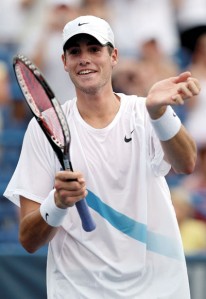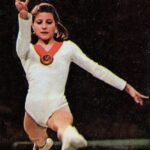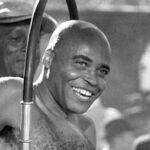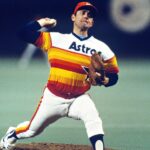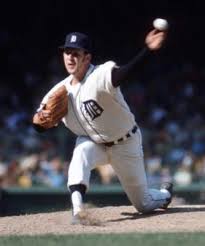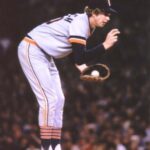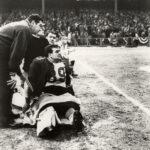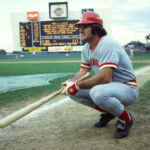American Men Tennis Players Continue To Lag Behind World’s Best
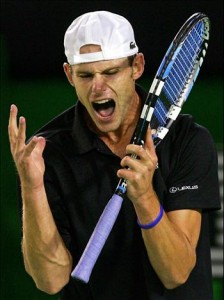
Despite a disappointing 2010 season, Andy Roddick is still the top American on the men's tennis tour.
Andy Roddick’s quarterfinal appearance in the Australian Open will not be remembered as one of the finest moments in his career. He has, after all, won the US Open, on three occasions been a Wimbledon finalist, and has twice been one round further at the AO.
It was a noteworthy event for another reason: It was as far as any American advanced in any of the four majors of 2010. Sam Querrey reached the fourth round of both Wimbledon and the US Open, but got no further. John Isner won the longest match in the history of the sport at Wimbledon, but had nothing left for the next round.
It’s a far, far cry from 1995, when four Americans reached the AO semis, none of those four participated in the first round of Davis Cup and the US side went in as the heavy favorites anyway.
What happened to US tennis? Here are a few factors:
The rest of the world caught up: Globalization affects a lot more than who makes our toys, and this is evident when looking at the ATP Tour’s top 5.
Spain has a proud tennis history, but Rafael Nadal has already won more Grand Slams than any other two Spanish players – men or women – put together. Swiss Roger Federer and Serb Novak Djokovic, among their many other accomplishments, are the first men from their countries to win Slams.
Scot Andy Murray has not tasted Slam glory yet, but represents Britain’s best chance to win a big one since the 1930s. Sweden’s Robin Soderling will not be spoken of in the same breath as his countrymen Bjorn Borg, Mats Wilander and Stefan Edberg, but he has ended his nation’s decade-long absence from the top 10 and the final weekend of the Slams.
The competition has gotten stronger, and the American side has not done the same.
Americans struggle off of hard courts: That American players don’t thrive on clay is not exactly news. There was an enormous drought between Tony Trabert’s 1955 win at the French Championships and Michael Chang’s improbable 1989 win in Paris. The last American to win there was Andre Agassi in 1999, and there was an undeniable element of providence involved that year.
But what about grass? It’s not widely remembered now, but even Pete Sampras and Agassi struggled at Wimbledon at first, because no matter how big one serves, how crisply they volley and how immaculately they return, the sensation of moving on grass is still one that a player raised on hard courts must adapt to.
Roddick did, and rather quickly, but had the misfortune of facing Federer every time he reached the last weekend. James Blake’s athletic ability should be rewarded there, but he has never been past round three.
Querrey, Isner and Mardy Fish in theory have the game plans to go deep, but they have yet to make good on that potential (28-year-old Fish probably never will).
In 2008 Horace Engdahl, the permanent secretary of the Swedish Academy that decides who will win the Nobel Prize for Literature, said that American authors should not be expected to win the award because they are too “insular” and “isolated.” This was widely and justifiably derided as a ludicrous claim about the nation that produced (among others) Mark Twain, Ernest Hemmingway and Cormac McCarthy, but when applied to tennis it makes sense.
Other than Roddick’s campaigns on grass and Robby Ginepri’s occasional second-week appearances in Paris, the US tennis contingent cedes the late spring through mid-July to the rest of the field, hoping they can conjure the necessary momentum when the tour returns to North America after Wimbledon.
There simply aren’t enough clay and grass courts in America for its players to grow accustomed to playing on those surfaces at a young age. The USTA could seek to build more of them, but perhaps the cheaper option would be to identify the nation’s best talents early and ship them abroad for a time, much as Marat Safin’s parents did when he went to Spain at age 14.
But even that won’t necessarily produce Slam winners unless one other factor changes.
America’s players are not the most talented on tour: This wasn’t always so, but can’t be denied at the moment. Some of America’s players are not making good on the opportunities that have presented themselves, but Roddick and Isner in particular have proven themselves to be outstanding competitors.
For the most part, though, the current crop are serve-reliant players who lack the athletic ability and feel at net to achieve the success of Sampras or Boris Becker, and haven’t got movement swift enough or groundstrokes brilliant enough to match the current top 5.
Blake may have had that kind of talent, but a forehand as flat as his is not conducive to consistency, and even if it were his repeated misfortunes with injuries and illness might have left him resigned to bridesmaid status anyway.
This is the biggest difference between American tennis today and in the eras of John McEnroe, Pete Sampras and Andre Agassi, when talent was something the US had in surplus. In the past decade, Roddick has done as much as any man, Federer and Nadal included, to keep improving as a player. No matter what he tries, though, he’s never going to cover the court the way those two do, and he’s never going to strike the backhand as crisply as they can.
And this is the hardest gap to address. In America tennis has long been on the losing end of the popularity contest with football, basketball and baseball. The US Open revealed a pair of bright spots: Jack Sock won the boys’ singles, and 18-year-old Ryan Harrison upset No.15 Ivan Ljubicic in round one.
If only those results could guarantee future success: The now-23 Ryan Sweeting won the junior title in 2005, and is currently ranked No. 114. Harrison is surely glad to have his win over Ljubicic, but that was a victory over a 31-year-old who has never thrived at the US Open.
Sock, Harrison and the rest of their generation will their opportunities, but it’s far from proven as to whether or not they can bridge the talent gap. Until someone does, America’s male players will observe Grand Slam glory the same way America’s tennis fans do: on TV or at courtside.
